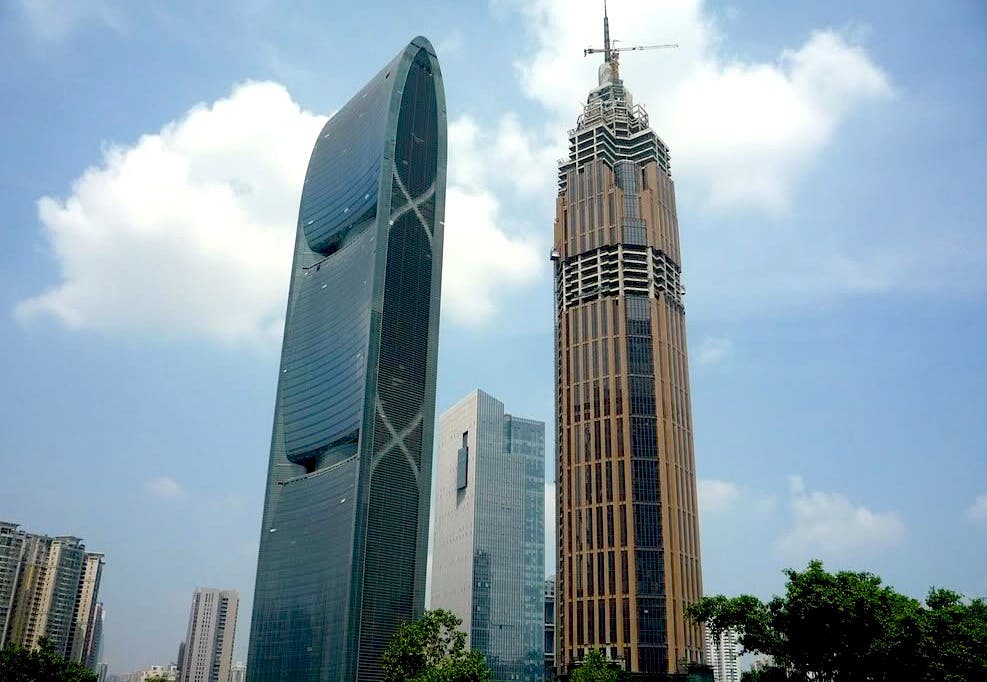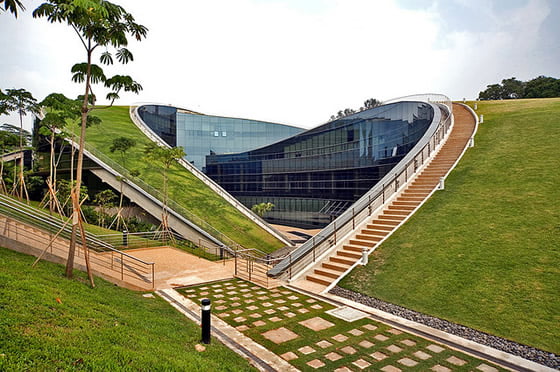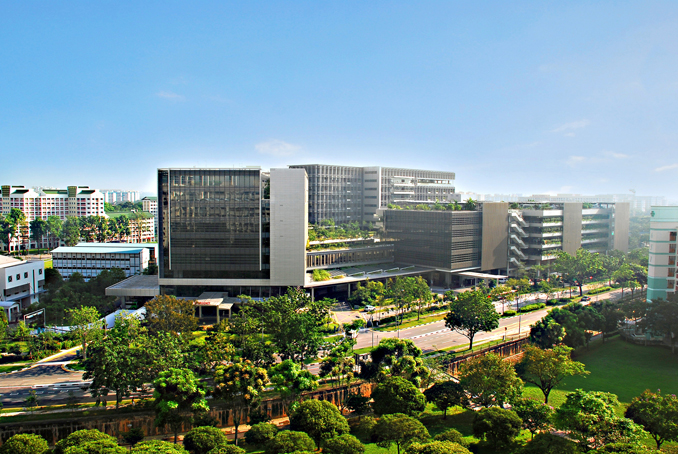Green building expert and thought leader Harvey Bernstein believes that the key to advancing the global green building movement comes down to one thing - making people realise how buildings impact their health and happiness.
To continue reading, subscribe to Eco‑Business.
There's something for everyone. We offer a range of subscription plans.
- Access our stories and receive our Insights Weekly newsletter with the free EB Member plan.
- Unlock unlimited access to our content and archive with EB Circle.
- Publish your content with EB Premium.
To do so, the industry must focus on collecting data and intelligence so as to be able to quantify the benefits of green buildings, he says. Currently the vice-president for industry insights and alliances at McGraw-Hill Construction, a leading news and intelligence firm for the building sector, Bernstein has over 30 years worth of experience in the business. He started with a civil engineering academic background from the New Jersey Institute of Technology before making his way up across different organisations including being the former chief executive for the International Institute for Energy Conservation.
A visiting professor at the University of Reading’s school of construction management and engineering, Bernstein is one of the guest speakers at the upcoming International Green Building Conference (IGBC) in Singapore this September, where he will be revealing more about gathering intelligence to make the business case for green buildings.
Here in this exclusive Eco-Business interview, he tells us more about the role people will play in convincing companies on the advantages of building green, and his aspiration to design and build a better world for society.
How did you move from civil engineering to focus on sustainability?
At its heart, civil engineering is about how we build and design the world around us, so I think there is no better discipline to serve as an educational foundation for working in sustainability and for helping create building and construction solutions that use fewer resources to create a better world for ourselves and the future.
“
I think there is not enough awareness about the full benefits of green that extends beyond building operations and to the impact on an occupant. Buildings have such a profound impact on our lives since we live, learn, work and play in buildings … The more we can quantify these benefits and demonstrate that a building has positive benefits on the worker or building occupant, the more we will increase engagement.
In terms of how I professionally increased my focus on sustainability, there were a few notable milestones. As President of the Civil Engineering Research Foundation (CERF), part of the American Society of Civil Engineers (ASCE), one of our core themes was to figure out ways to move innovative new products into the marketplace for which there were no standards.
That led to a partnership with the US Environmental Protection Agency (EPA) evaluating products and their impact on the environment. Also at CERF, my board of directors and I decided that we should look at civil engineering globally. As I explored the global markets, I began to observe sustainability as a major trend.
That led us to acquire the International Institute for Energy Conservation (IIEC), which had offices in seven countries and was entirely focused on energy efficiency and sustainability. I became president of IIEC through the acquisition, which allowed me to connect and learn from other government agencies and corporations globally and then bring that knowledge and work back to the US market, strengthening CERF’s activities.
When I moved to McGraw Hill Construction (MHC) in 2004, one of my responsibilities was helping MHC find ways to help the industry plan for what we knew would be a major change in the way we design and construct buildings, so I launched the SmartMarket research programme to help investigate green and other transformative industry trends in 2005.
That first study we did in 2005 helped MHC to see that there was a market need for a magazine dedicated to sustainable design and construction (which became GreenSource) and for our Dodge report, which lists commercial construction projects open for bidding, to include green information along with other data on building attributes or key project details.
Today, we do at least one to four studies each year on different aspects of the green building marketplace and annually evaluate the share of US construction that is green. I’m proud of what we’ve accomplished because we have helped the industry get the information they need to help transform our buildings to be greener and healthier.
Speaking of research and evaluation, can you share some insights on the global green building movement?
I think there still remains a misperception of the cost of green. Except for those who specialise in green and do it every day, a majority of people outside the industry have the perception that it is more expensive to build a green building that performs well versus traditional construction (non-green).
However, as any experienced green practitioner will tell you, the process of building a green building as an integrated team can lead to innovations and minimise costs while improving overall building performance. On a net basis, there are many examples of buildings that are green and built at the same cost or less as a non-green building.
But I also think there is not enough awareness about the full benefits of green that extends beyond building operations and to the impact on an occupant. Buildings have such a profound impact on our lives since we live, learn, work and play in buildings. Those environments impact us. Our children’s health, attentiveness and school performance can be improved by the school design and construction; patients in hospitals can have shorter stays and better health outcomes from green hospitals; and companies and individuals can reduce healthcare costs from absenteeism and illnesses that are a product of a poor indoor environment.
The more we can quantify these benefits and demonstrate that a building has positive benefits on the worker or building occupant, the more we will increase engagement. As a thought leader, I think it’s important for me to convey that message.
How do you create sustainable solutions for the built environment and how can businesses be encouraged to adopt them?
One of the things about strategic brainstorming sessions is that each party brings to the session their own perspective and expertise. You may not go into that meeting with a solution, but you are feeding off the thoughts and ideas of others who are experts in the field. So, out of that collaboration and creativity come solutions to problems that may not have been fully recognised at the outset. This type of strategy has been used very effectively in green design and construction.
We often see the best performing green buildings being created through a collaborative design and construction process where they bring the entire team (owner, designer, engineer, contractors, etc.) together at the start of a project and throughout the pre-design, design and construction phases of the project. This has led to innovative sustainable building solutions — and ones that are more affordable due to creative thinking. If these sessions include the major players, you have buy-in, and it allows you to bring that into practice much easier—whether it’s green buildings or any other strategic objective.
In your opinion, what are some of the best examples of green buildings or business spaces in Asia, and why?
There are four that come to mind that we have profiled in our different publications (and this is not in any particular order):
- Pearl River Tower in Guangzhou, China: Completed in 2012, I think this project (the one in the left side of the photo) visibly sends a strong message about how innovative we can be with renewable energy in skyscrapers. It includes wind turbines, solar collectors, photovoltaic cells, raised floor ventilation and radiant heating and cooling systems. It was also located to take advantage of wind and solar patterns in the region.

- Nanyang Technological University in Singapore: I like how the university connects nature in such an innovative way. The roof is obviously one of the features that is most creatively interesting and I like how the roof is a key feature in the rainwater collection system that allows the building to conserve water and reduce storm water runoff. The roof also reduces the heat island effect, which is important in many parts of the world.

- Khoo Teck Puat Hospital in Singapore: As I mentioned, I think the connection of a building to human health and well-being is really important for us to stress, because when that is combined with the financial benefits, we have the ideal environment. I think this project embodies this connection with its deliberate incorporation of nature. For example, the therapeutic green spaces and the roof gardens provide calming environments, and the citrus and edible gardens provide organic sources of herbs and spices for the hospital’s use. This connection to nature is proven to help heal patients. And the building also is 27 per cent more energy efficient than a traditional hospital using solar panels and solar water heating system and other energy-efficiency strategies.

- Shanghai Tower in China: Though this is not yet completed (the expected date is 2014), this project in the Pudong neighbourhood in Shanghai is an excellent example of using building information modelling (BIM) to create a sustainable—and very innovative—building. It will be 128-storeys tall with wind turbines integrated into the building walls to provide power. And the unique spiral shape reduces wind load and assists with rainwater harvesting. This also allowed a reduction in steel and glass use compared to if it had a more traditional shape. The tower was also designed to be a community in itself, and is split into seven zones and has a double glass façade that creates a public atria that will function like plazas. I also like how this building brings the ‘future’ to Pudong, built next to the Jin Mao Tower, which represents the past with its pagoda-inspired design, and the Shanghai Financial Tower, which represents the present.

In the 2013 SmartMarket Report on world green building trends, you raised an interesting point on how businesses now see sustainable buildings as a business imperative, unlike four years ago when the driving reason was “doing the right thing.” What is your view about these changing motivations?
I don’t see there being a “right motivation”. I see them going hand in hand. I think the reason the business case has become so important is because we saw a global change in terms of the desire to do the right thing to a balance between sustainability and profitability. We looked for ways to leverage the environmental and socially-beneficial parts of green design with maintaining an effective business.
So, as the early adopters motivated by doing the right thing became more experienced, they were able look for ways to improve building performance and then prove it. That allowed the business case to be developed and provided the incentive for companies to green their buildings.
“
You need to show how it’s helping people as well as the bottom line—there’s a connection. Healthier people make for more productive and happier workers.
I think that there are many different factors that are going to drive the adoption of green. But those that are driven by the “right thing to do” will help to find new innovations and document the results of their efforts that can then be translated into business terms. We’re seeing this now with the focus on the human impacts of the building. Occupants might not have been looked at the way we are looking at them now, but if it’s the right thing to do, you need to show how it’s helping people as well as the bottom line—there’s a connection. Healthier people make for more productive and happier workers.
Lastly, what lessons can you share to companies thinking of building green?
I think it’s important to have quantifiable data and intelligence. We are increasingly asking for decisions based on data not just anecdotes. So, I hope that I can provide data that will help the attendees in their work. In terms of specific content that I think of value, the key areas include helping reveal how different countries are focusing on green and the different aspects motivating and challenging their future investments. We have some interesting results on the business benefits of green building that I think helps to provide some of the data facts to support efforts. And finally, I would like to impress upon the attendees the importance of the building impact on the occupants because I think that this has to be a focus moving forward.
To hear more from Bernstein and other industry experts like senior adviser to US Green Building Council Mark Ginsberg and AECOM’s Gary Lawrence, register for the upcoming International Green Building Conference 2013 here.










